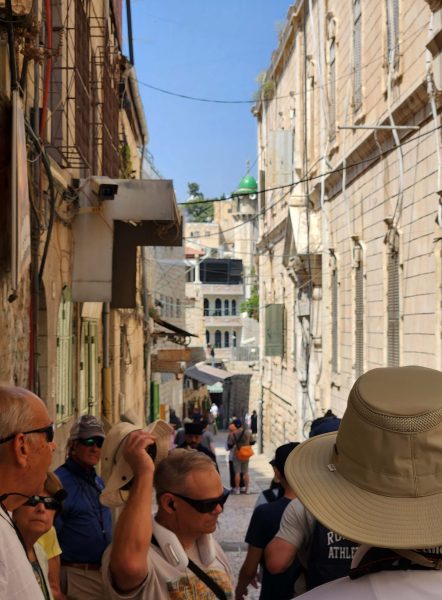The streets in the old cities of Europe and the Middle East are very narrow and seem to meander at will. I assumed this was because they were established before the invention of automobiles but, just for fun, I searched “why do old European cities have such narrow streets?” and affirmed that I was right. (Insert a high five for me here.)
Streets were not included when the cities were first built; instead, buildings were erected and paths were formed among them by foot traffic. In time, those paths were paved–in my experience, mostly with lumpy, bumpy cobblestones or slippery paving rocks. Because the paved streets followed established foot paths, they really do meander through the cities. A little later in time, newer streets were made wide enough to accommodate a single horse and wagon for deliveries. Today, I think the narrow streets are described as “Old World Charm,” which sounds much better than simply “old.”
Personally, I like the narrow streets. They encourage the development of small shops and restaurants; they invite walking and slowing down to browse and relax; and they seem far more friendly and personal than modern wide sidewalks separated by even wider modern streets. It’s a given that these old, narrow streets will be filled with pedestrians, but sometimes it’s hard to believe my eyes when I see cars inching their way through these streets as well.
Enjoy the pictures of some of the narrow streets Ted and I walked on our 2023 BT.
Jerusalem, Israel

Corfu, Greece

Split, Croatia

Skradinski, Croatia

Venice, Italy

Taormina, Italy

St. Remy de Provence, France
